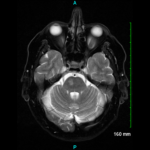
During a press conference in 2002, then Secretary of Defense Donald Rumsfeld provided a categorization of information. To Rumsfeld, information could be divided into three types: known knowns, which are things that we know we know; known unknowns, which are things that we know we don’t know; and unknown unknowns, which are things that we don’t know we don’t know.
This categorization has been much discussed (as well as criticized, touted, and mocked, depending upon your point of view). While history will ultimately judge the wisdom of Rumsfeld’s policies, I am convinced that, when it comes to medicine, there is truth in his thinking. Indeed, I believe that dealing with unknowns – both known and unknown – is at the heart of medical practice and successful patient care comes from learning to make decisions in the face of the uncertain, the imprecise, and the imponderable.
To illustrate this point, I would like to describe a case. This case is a classic example of known and unknown unknowns, and I want your opinion on its management. As you will see, this case is tricky because the rheumatologist was an adviser and not the decider.
Complex Case with a Surprise Twist
The case involved a woman in her 70s who had the usual set of medical conditions that comes with age. Her major complaint was ill-defined chest pain that led to an extensive cardiovascular work-up, which showed that, while her coronary arteries had the slightest occlusions, her thoracic aorta had a worrisome dilation. The surgeons were consulted. They diagnosed an aneurysm of the ascending thoracic aorta and, with abundant cutting and sewing skill, they replaced the troubled aortic segment with a fine new graft.
The diseased aorta – dunked immediately in a jar of formalin – made its way to the pathology department, where the findings were as dramatic as they were unexpected. Under the microscope, in the red and blue hues that are the hallmark colors of hematoxylin and eosin, the aorta was filled with inflammatory cells. Among their number, these cells included some hefty-looking giant cells filled with more than their share of nuclei. The diagnosis was clear: giant cell arteritis (GCA) of the aorta.
With the pathological diagnosis in hand, the surgeons consulted the rheumatology service for our recommendation. Our fellow saw the patient and, during a very thorough exam and methodical history, elicited none of the telltale symptoms of GCA: no throbbing headache, no scorching scalp pain, no curtains of darkness falling across the eyes. Certainly, the patient had her share of misery, but none that could point to vasculitis. Nevertheless, our service, worried that vasculitis could darken her vision forever or menace an artery to the brain, recommended an immediate course of steroids. We wanted the real deal: 1 mg/kg jet-sprayed into the IV that was still in place post-op.

